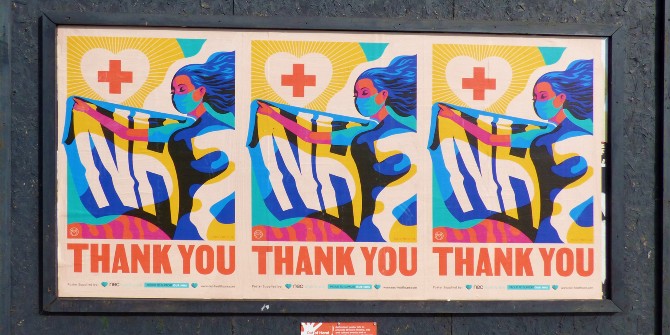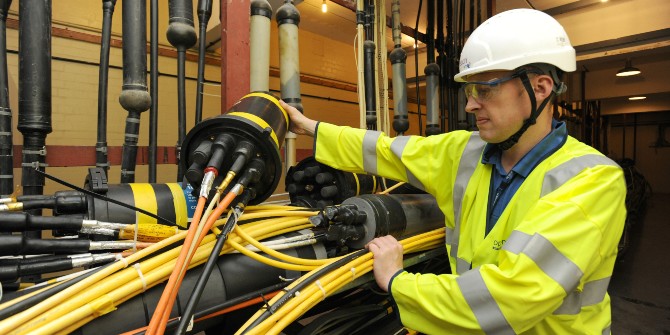Evidence from Italy, Germany, and the UK shows high levels of inequality aversion – a dislike for inequality and a preference for fairness – in both income and health, explain Miqdad Asaria, Joan Costa-Font, and Frank Cowell (LSE). In the UK in particular they find that people are more inequality averse, especially to health, but that the effect is stronger among those not directly affected by the pandemic.
Understanding how individuals trade off reductions in inequality with increases in the aggregate wellbeing of society should be an important guide for public policy decisions, especially when society undergoes a significant shock such as a pandemic. Inequality aversion reflects how much a society is willing to give up in order to achieve a more egalitarian distribution of wellbeing. Inequality aversion is also partially responsible for the levels of inequality in society and may vary with individual characteristics such as age, income, aversion to other risks and education. Are inequality preferences affected by large external shocks such as COVID-19? Do those directly affected by COVID-19 differ from the rest?
In our research, we examine preferences for income inequality and inequality in health outcomes using a survey taken during the initial stages of the pandemic in the UK, Germany, and Italy. We adjusted the results for interpersonal differences in risk aversion generally, in income, and in other relevant characteristics. We measured health, financial, and employment shocks experienced during the pandemic, and for the UK we looked at how aversion to inequality changed compared to what it was in 2016.
In all countries we find that people are more averse to income inequality than to inequality in health outcomes, consistent with the findings of other studies conducted before COVID-19. We report estimates of the average inequality aversion level by country in Figure 1.
Figure 1: Cross-country income and health inequality aversion in 2020

Note: we plot the mean estimates of income and health inequality aversion in 2020 covering Italy, Germany and the UK.
Across the three countries, we find that those who are younger, who had higher incomes, lower education attainment, or who are generally risk-loving had significantly lower levels of aversion toward inequality in both income and health outcomes. In contrast, we find no evidence to suggest any gender differences in these attitudes. Germans on average proved to be the most averse to inequality in income whilst aversion to unequal health outcomes is greater in the UK and Germany compared to Italy. Interestingly, individuals who experienced health or employment shocks in their household during the pandemic tended to be significantly less averse to both health and income inequality.
However, this result might not be specific to the COVID-19 shock; to compare the effect of exposure to COVID-19 with pre-COVID-19 equivalent effects, we examined inequality preferences over time in the UK. The evidence suggests an increase in aversion to unequal health outcomes of 17.3%. This is almost twice as large as the increase in aversion to income inequality and is consistent with the large health impacts and more modest income impacts of the COVID-19 crisis experienced in the early stages of the pandemic.

Comparing the same types of individuals in the UK before and during the pandemic, we also find that those individuals in high-risk age-groups for COVID-19 who experienced a health shock during the pandemic displayed significantly increased levels of aversion to health and income inequality compared to individuals of the same age who experienced a health shock in 2016. These effects may be explained by the salience of health shocks among individuals who are more exposed to the risks of the pandemic, as well as by direct experience with the potentially life-threatening effects of COVID-19 in households facing a health shock.
COVID-19 had important impacts on people’s income inequality preferences and health inequality preferences, making them more inequality averse, especially if they have not been affected by COVID-19 themselves.
This post represents the views of the authors and not those of the COVID-19 blog, nor LSE. It first appeared at the LSE British Politics and Policy blog.





